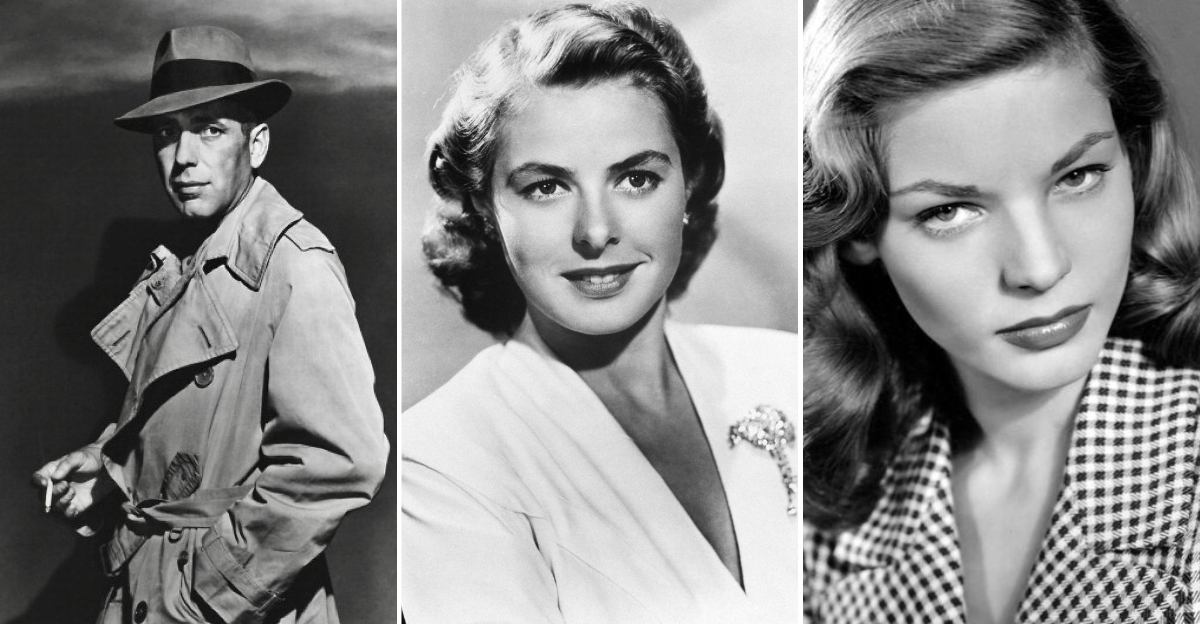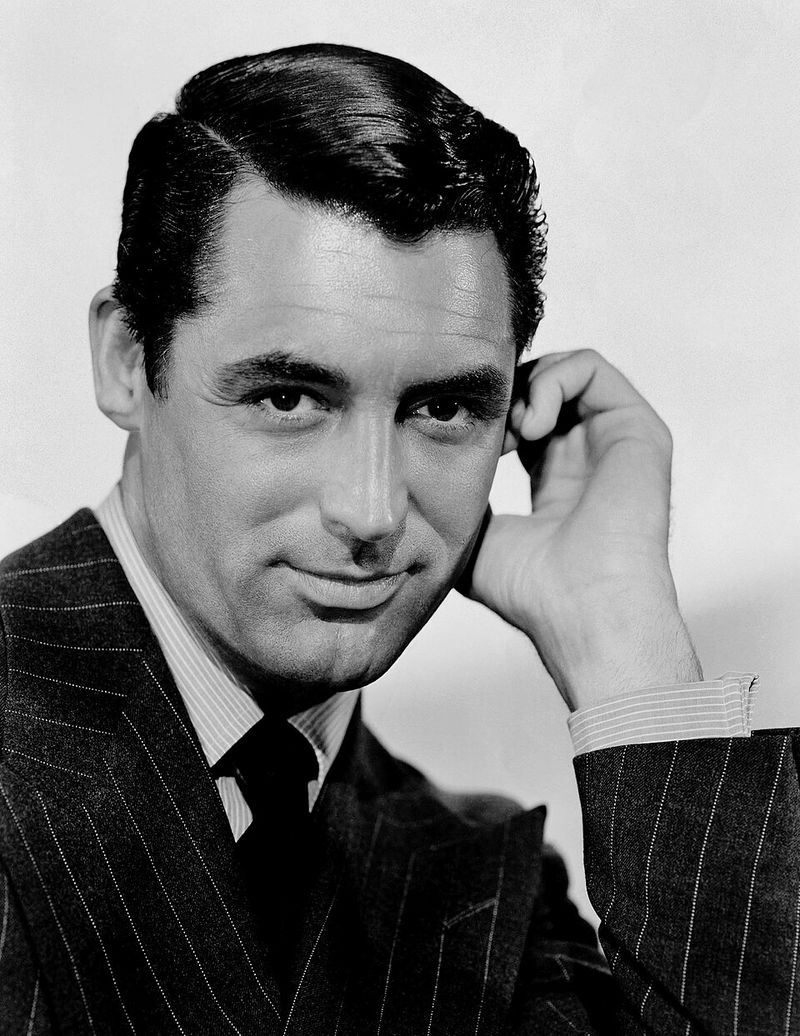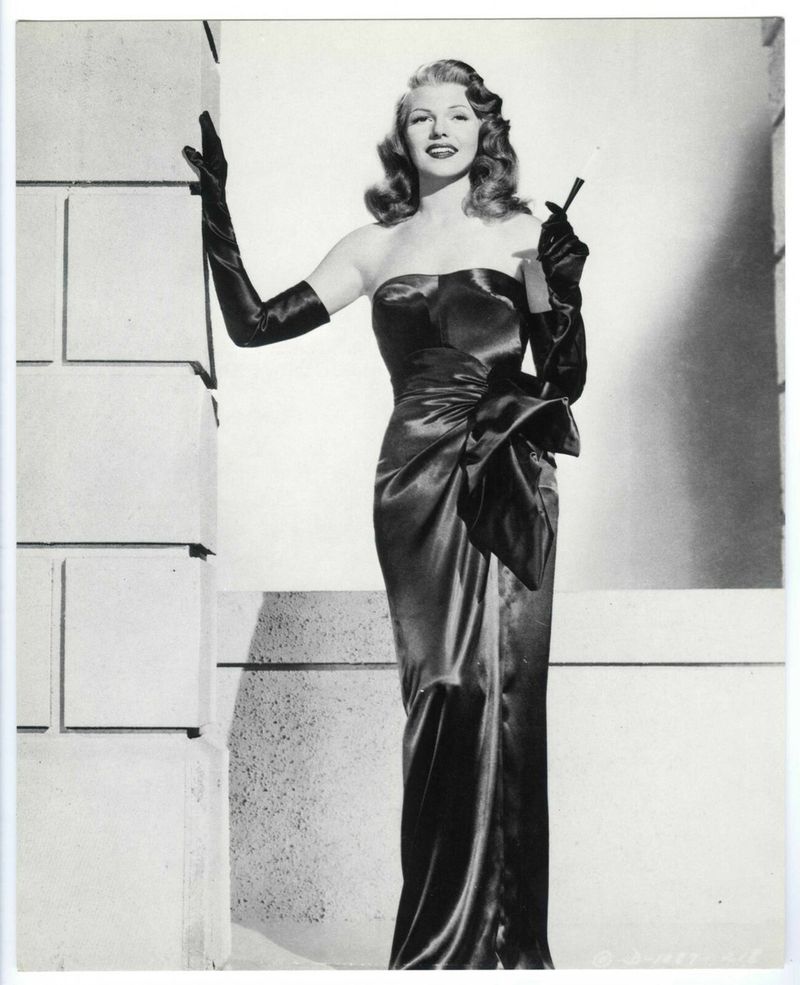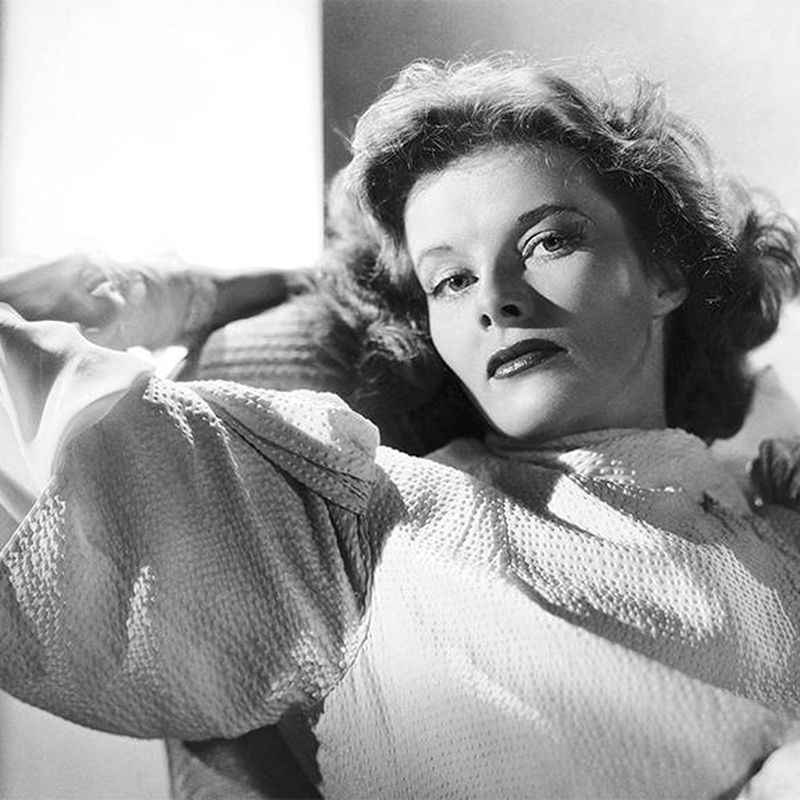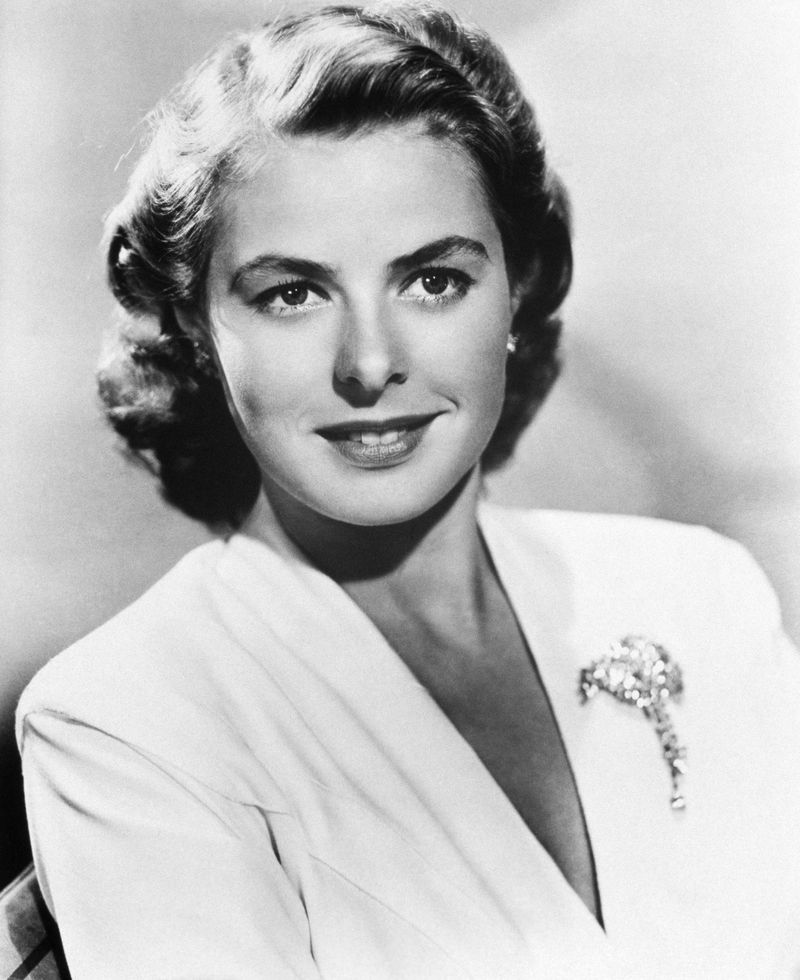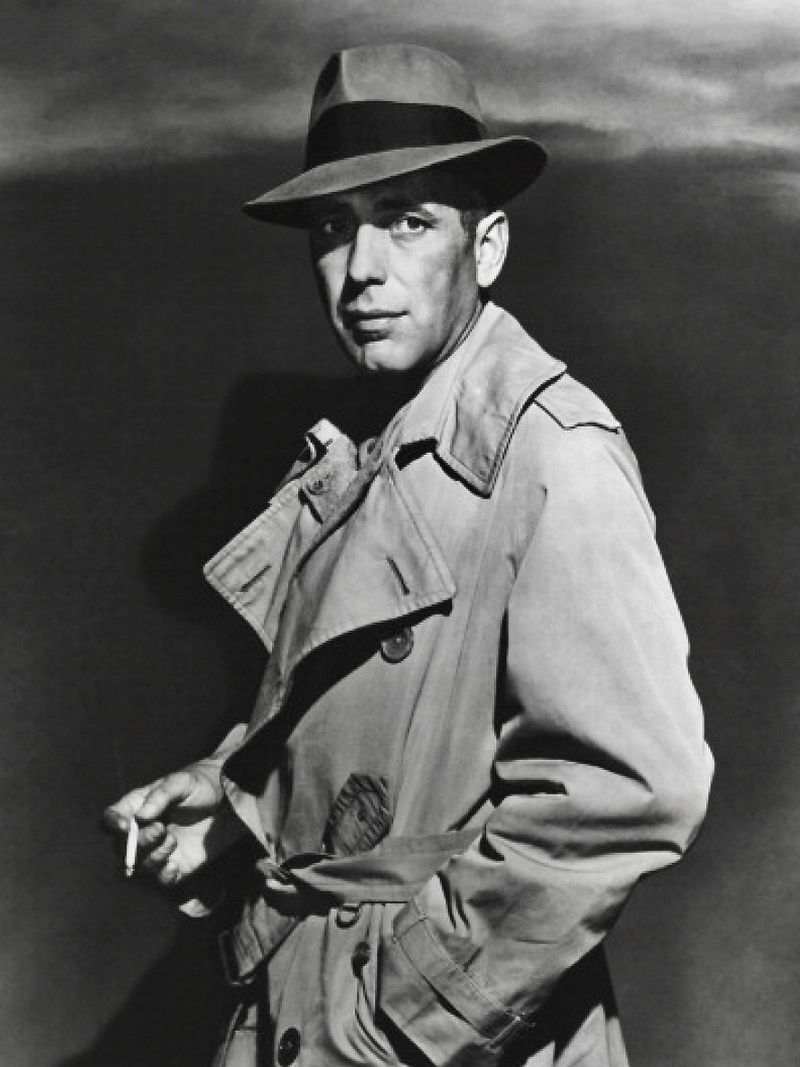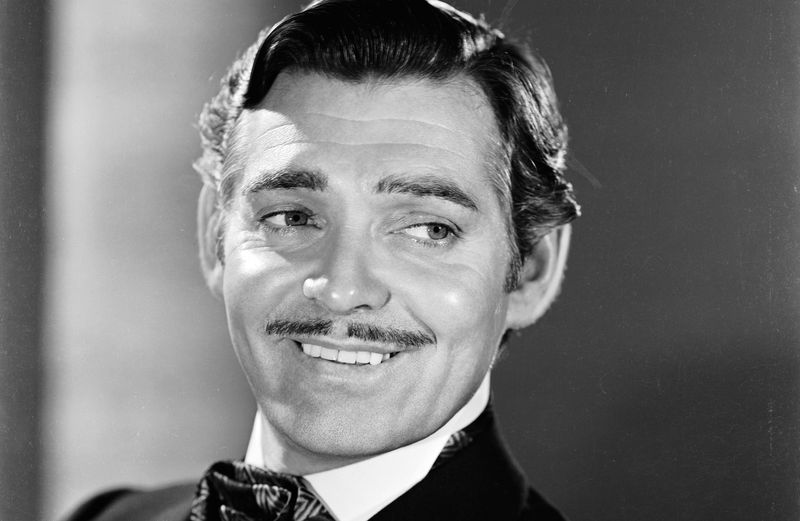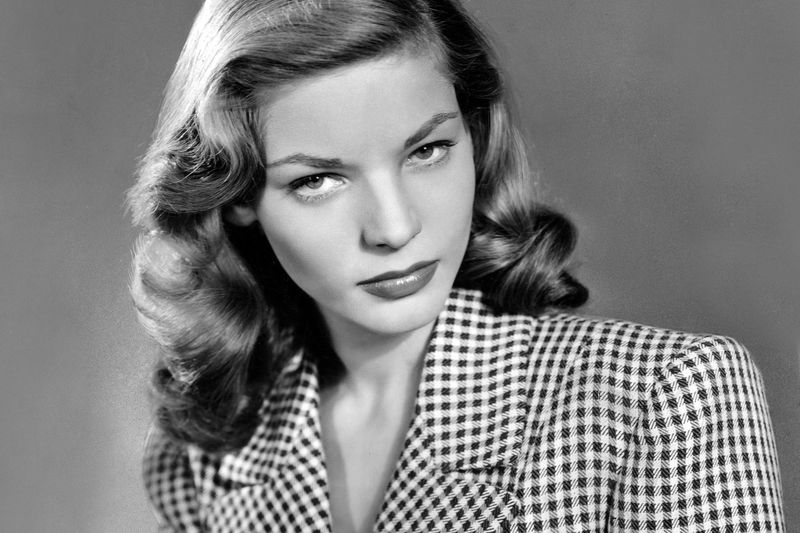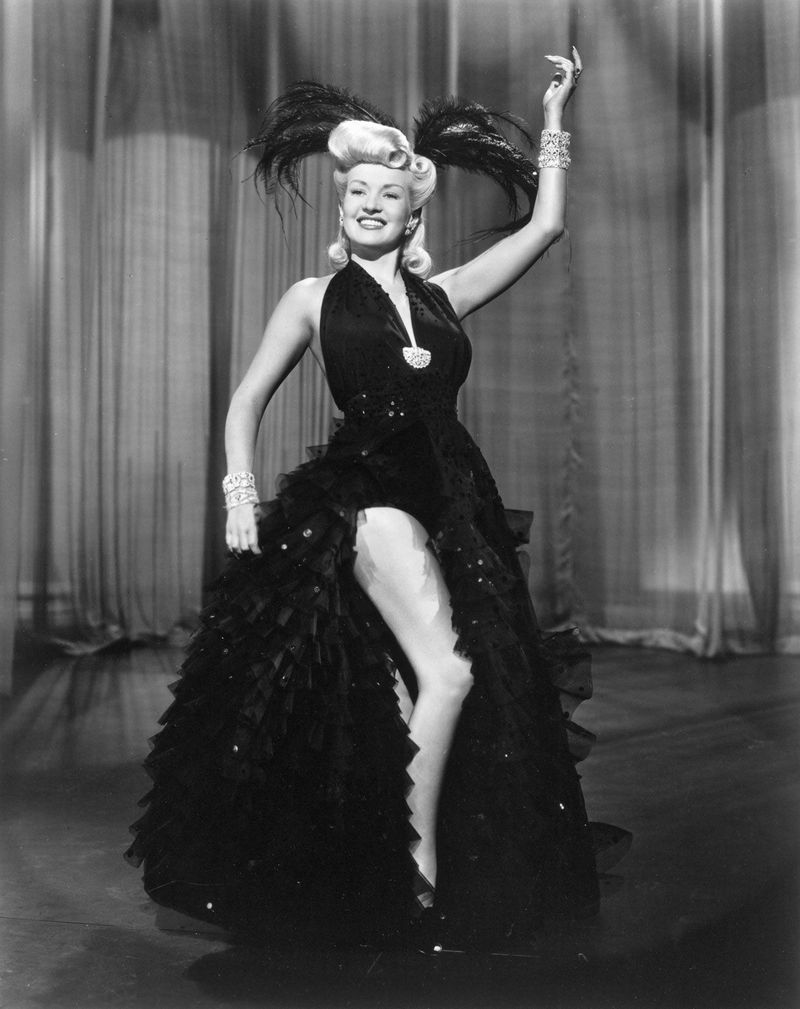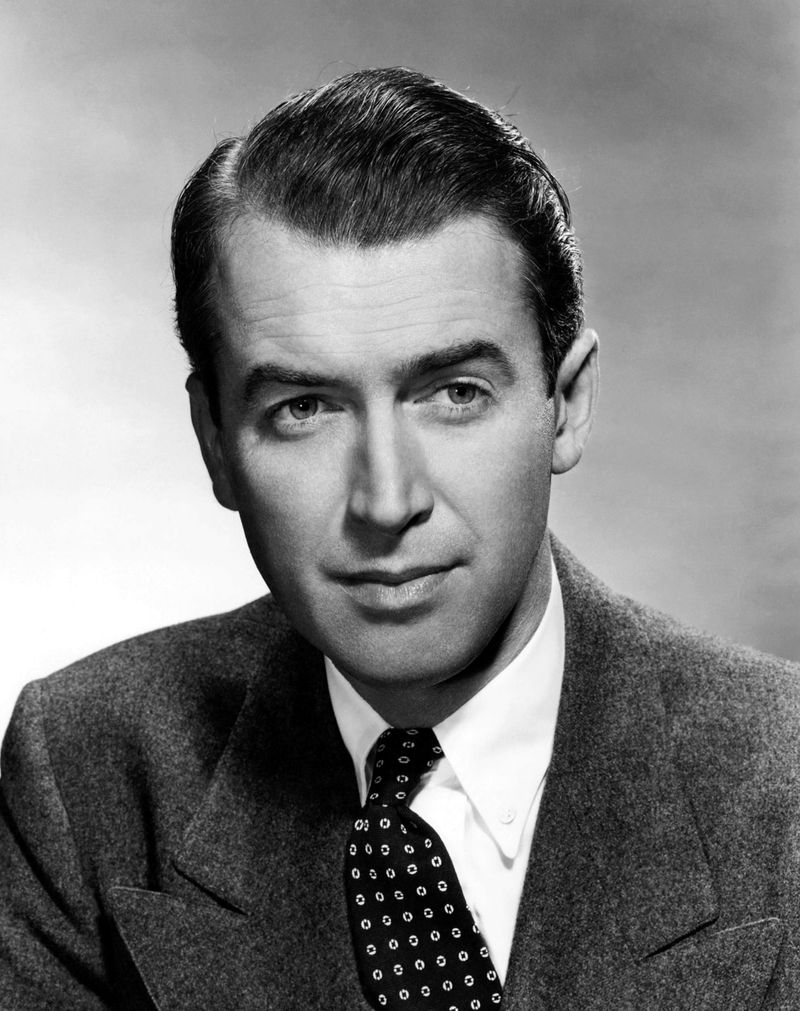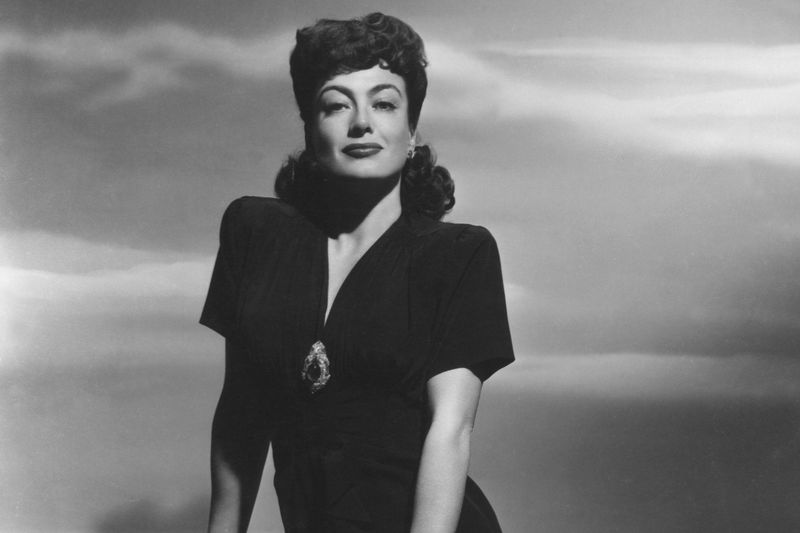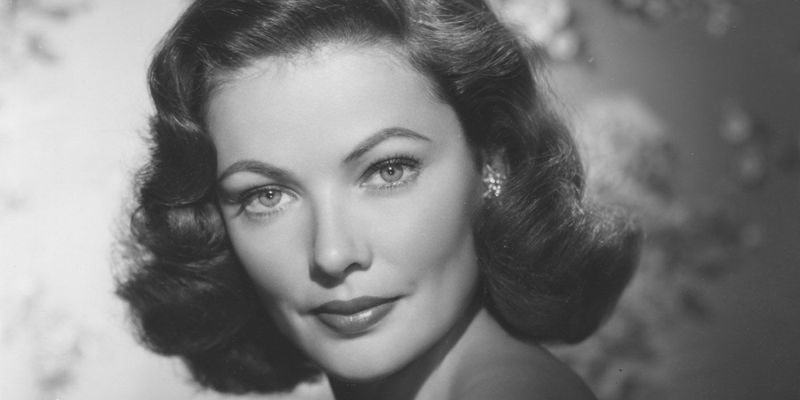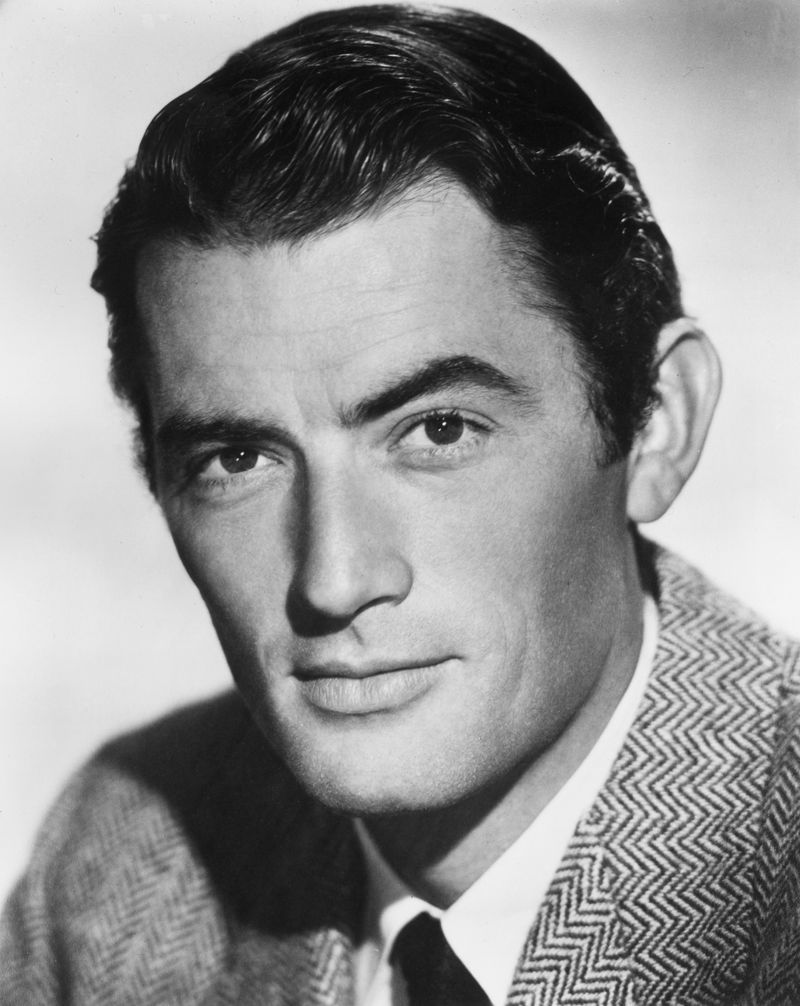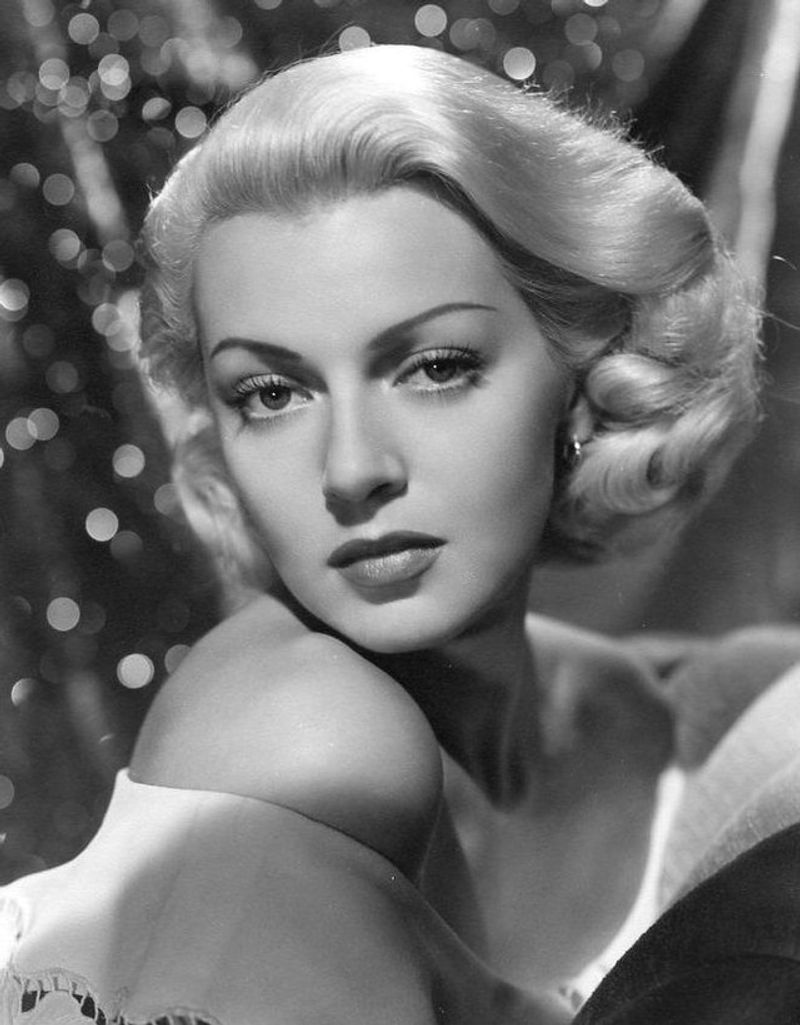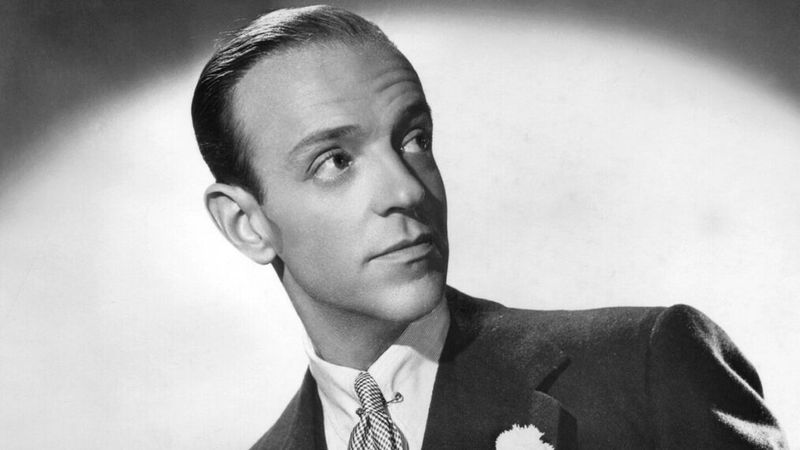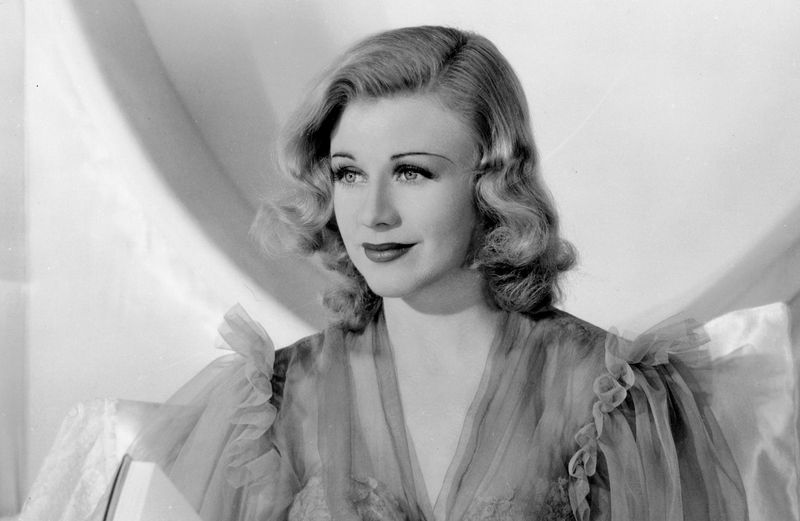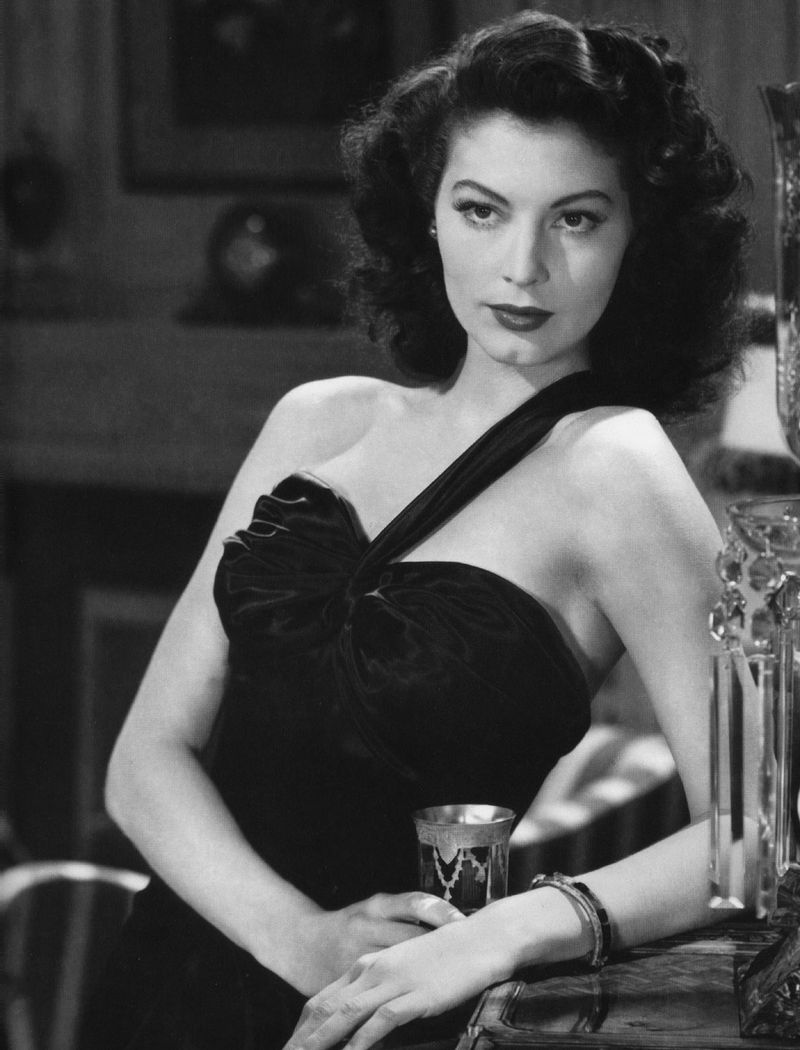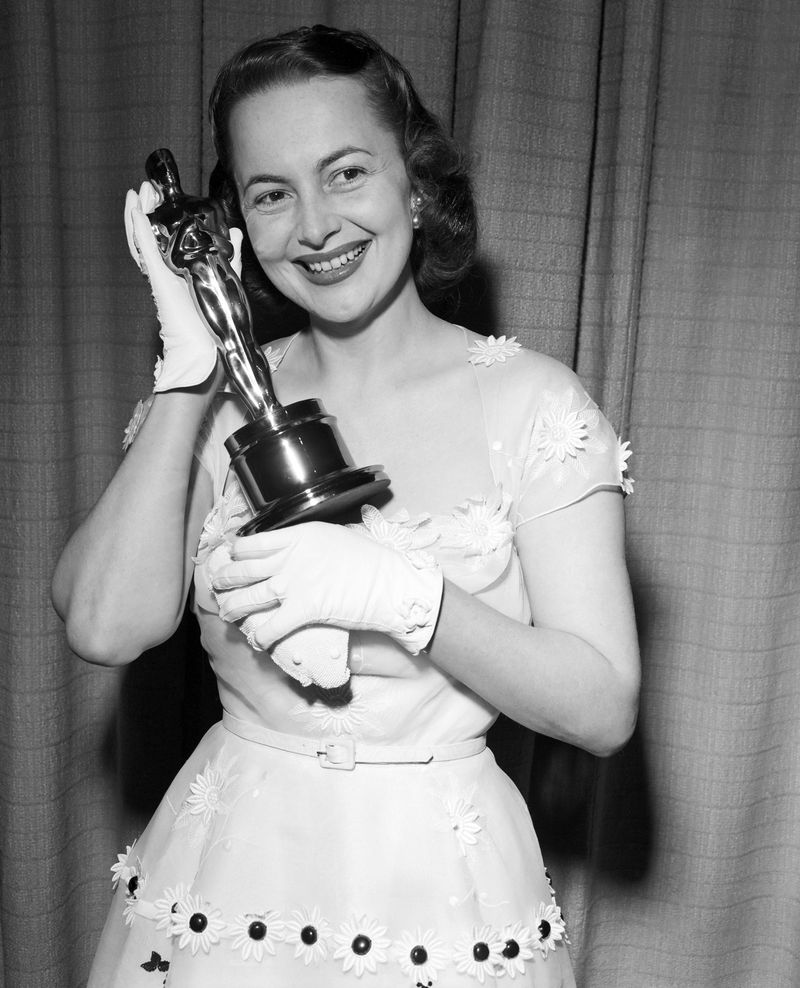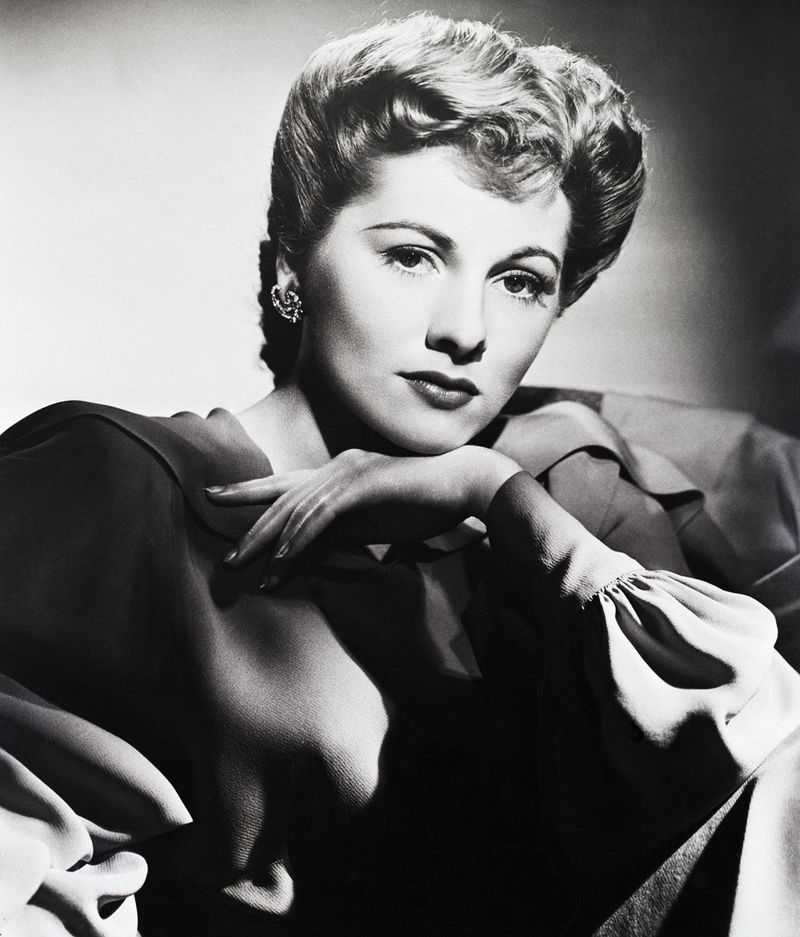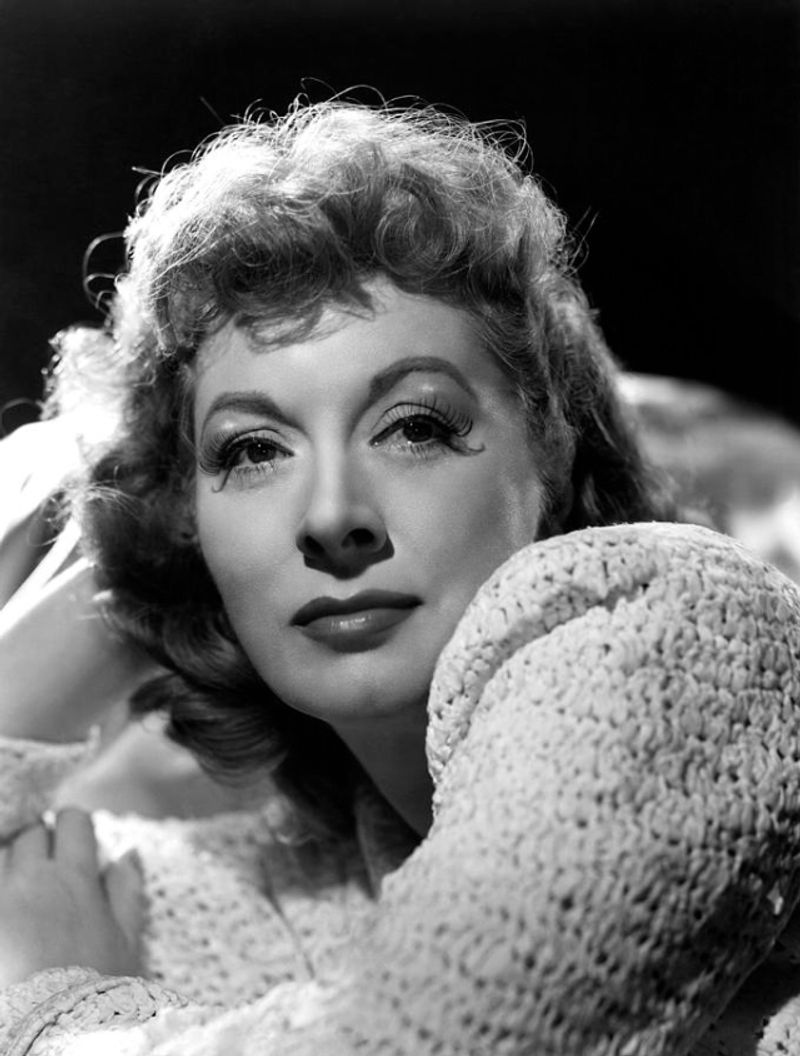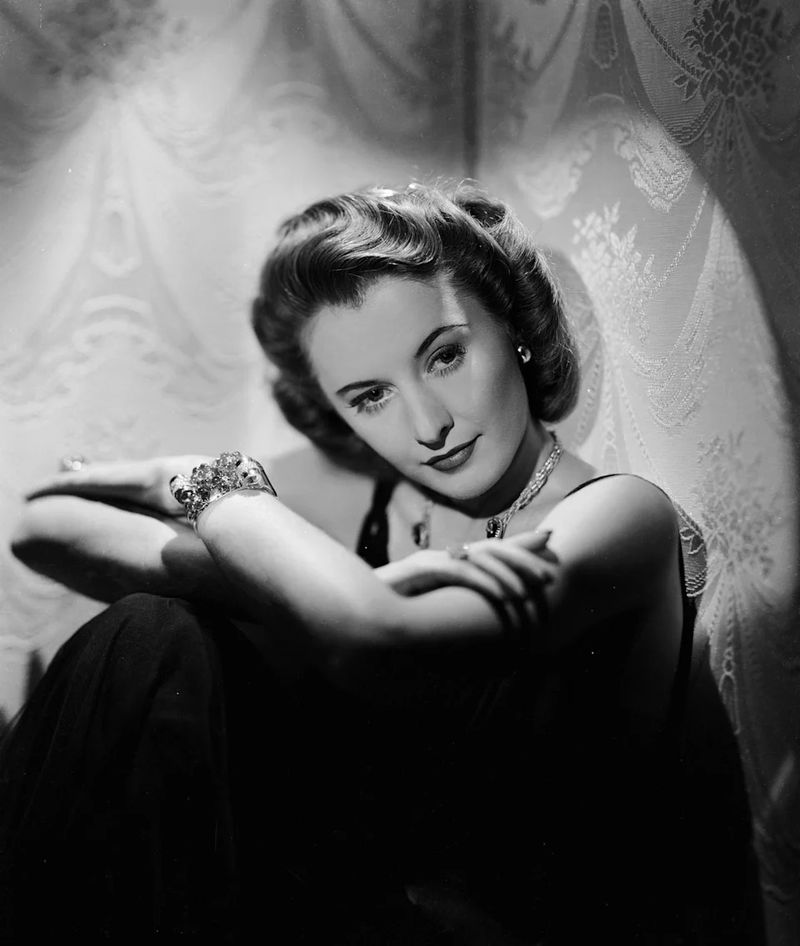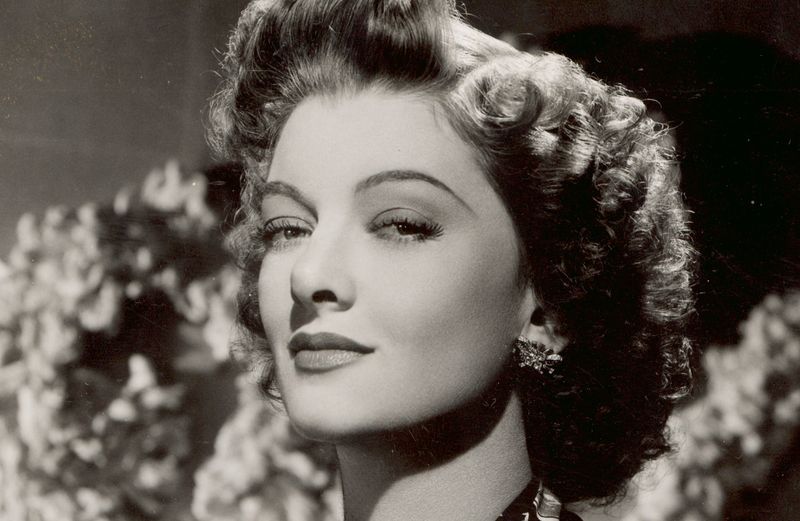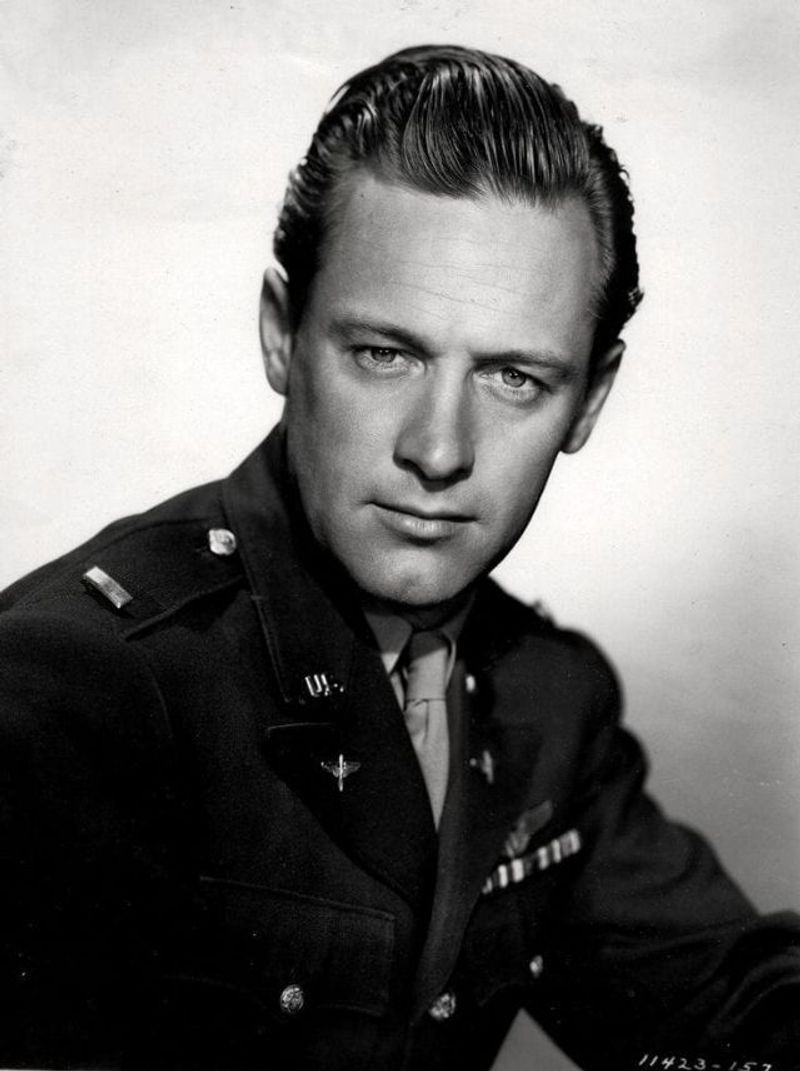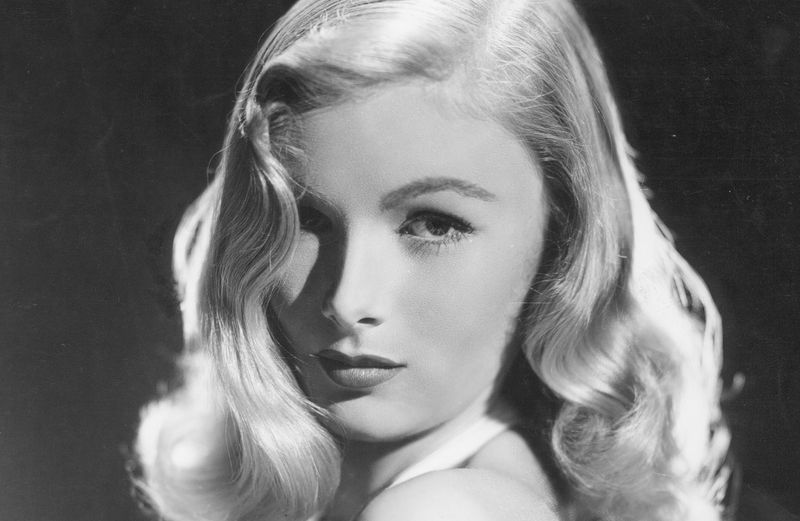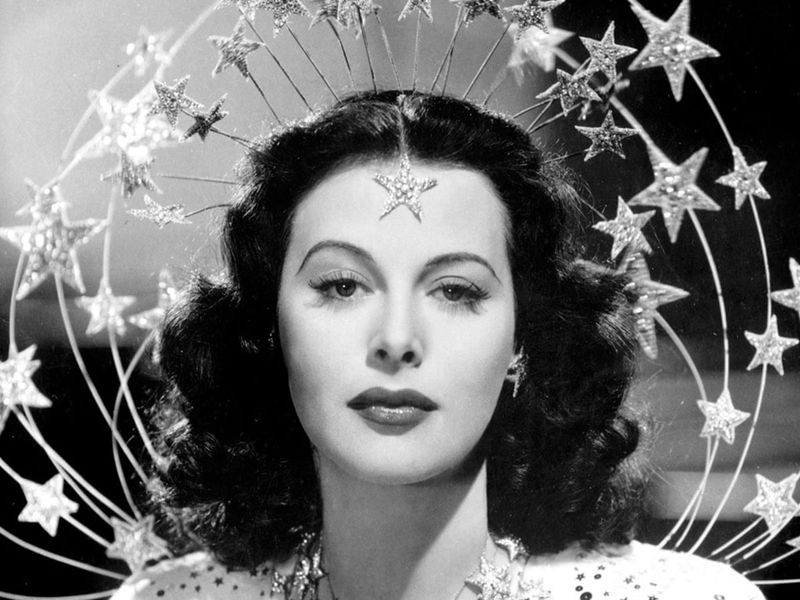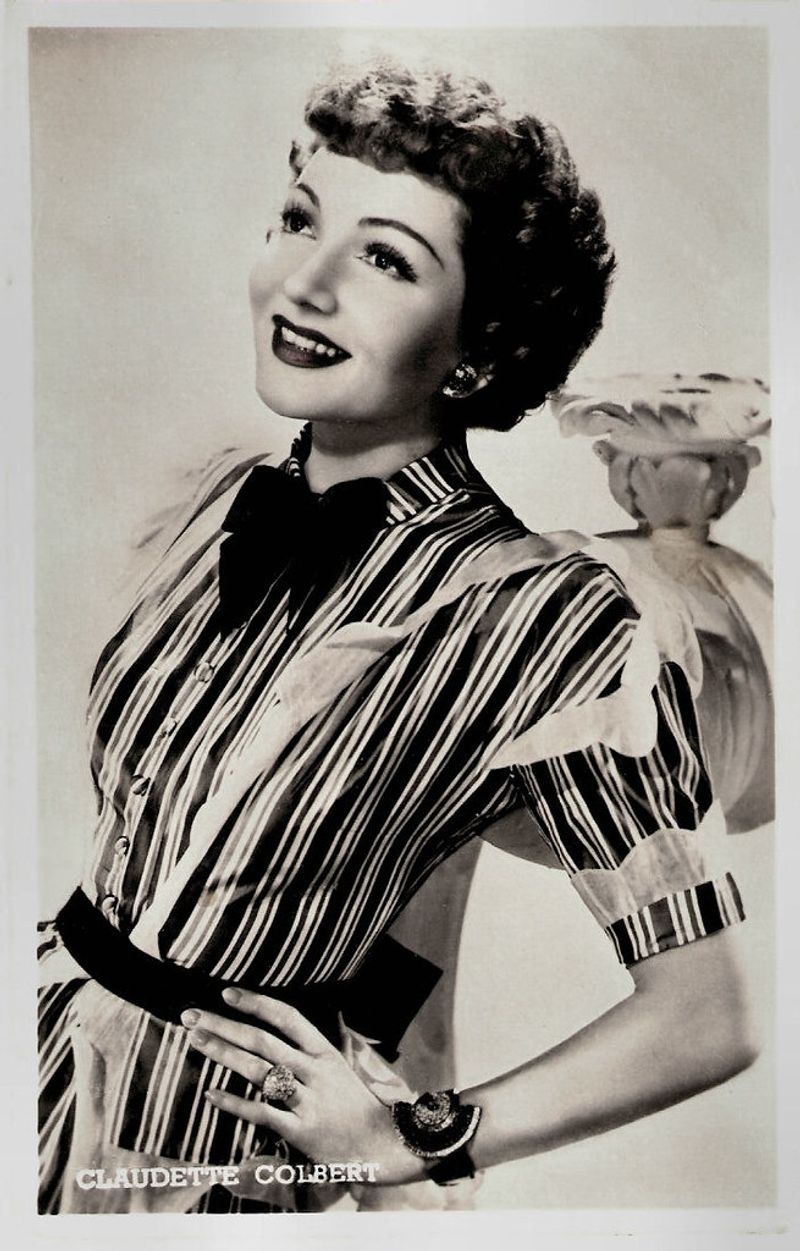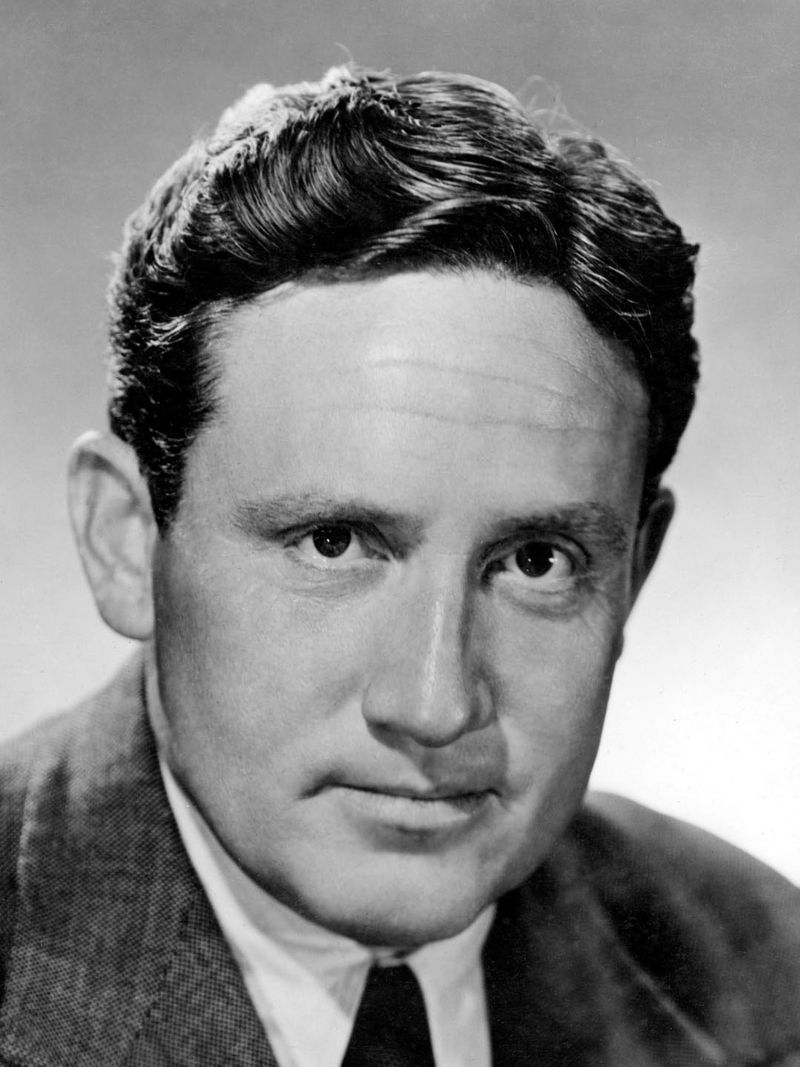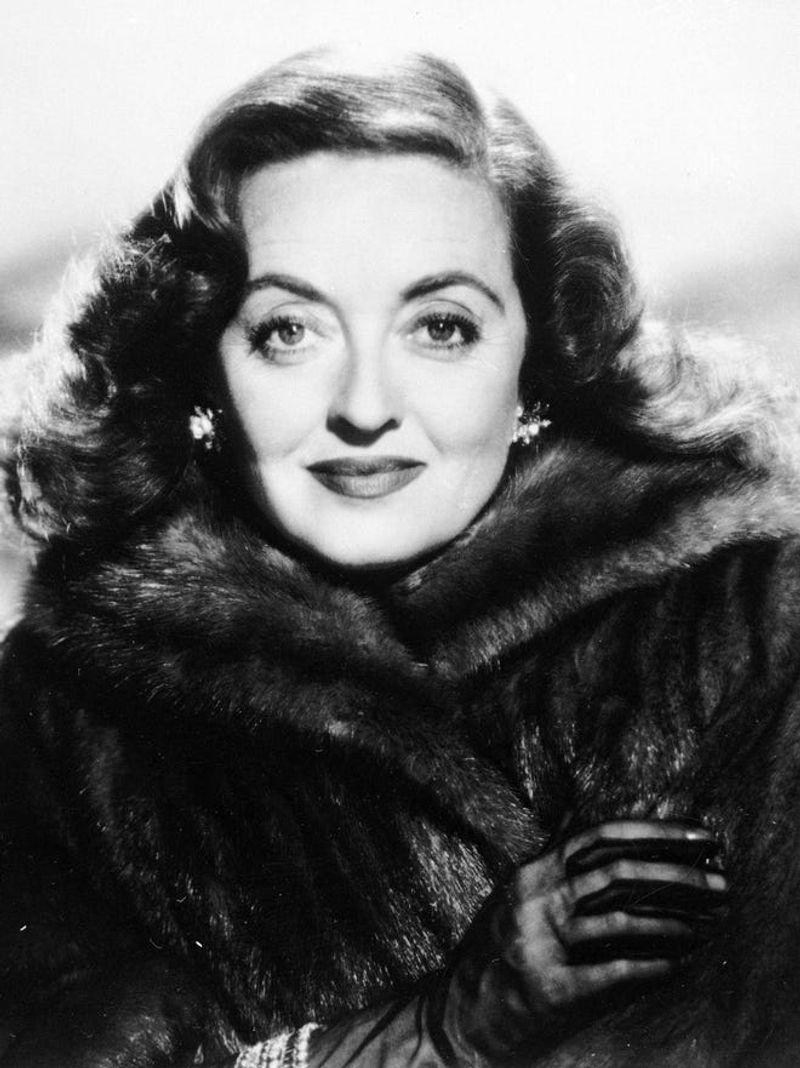The 1940s marked a definitive era in Hollywood, where cinema reigned supreme before television reshaped entertainment. Iconic stars graced the silver screen, captivating audiences with their charisma, talent, and memorable performances. These 27 luminaries not only defined an epoch but also left indelible marks on the world of film.
1. Cary Grant
Cary Grant’s suave demeanor and impeccable comic timing made him one of Hollywood’s most beloved figures. With hits like “His Girl Friday” (1940) and “Notorious” (1946), Grant showcased versatility, effortlessly blending humor and romance. His sophisticated screen presence and witty banter endeared him to audiences worldwide.
Originating from Britain, Grant’s journey to stardom in Hollywood exemplifies the allure of international talent during that era. His legacy of charm and elegance remains unparalleled in cinematic history.
2. Rita Hayworth
Dubbed “The Love Goddess,” Rita Hayworth captivated 1940s audiences with her sultry allure and magnetic performances. Her role in “Gilda” (1946) solidified her as a top box-office draw and World War II’s favorite pin-up girl. Hayworth’s dance sequences and emotive acting made her a versatile star.
Behind the glamorous facade, Hayworth faced personal challenges, yet her resilience and dedication to her craft were unwavering. Her lasting impact on Hollywood continues to inspire generations, embodying the era’s glamorous yet complex beauty.
3. Katharine Hepburn
A trailblazer for strong female roles, Katharine Hepburn redefined the portrayal of women in cinema. Her performances in “The Philadelphia Story” (1940) and “Woman of the Year” (1942) showcased her versatility and intellectual charisma. Hepburn’s fierce independence and wit made her a standout figure.
Known for her unconventional approach to Hollywood norms, Hepburn’s legacy of challenging stereotypes shaped future generations. Her impact on acting and gender representation continues to resonate in the film industry.
4. Ingrid Bergman
Ingrid Bergman, a Swedish sensation, ensnared audiences with her ethereal presence and extraordinary talent. Her iconic roles in “Casablanca” (1942) and “Notorious” (1946) displayed a blend of grace and intensity, making her performances unforgettable. She acquired multiple Academy Awards, a testament to her versatile acting prowess. Bergman’s ability to portray complex emotions with subtlety and depth endeared her to millions.
Her journey from Sweden to Hollywood exemplified the allure of international stars during the Golden Age. A symbol of resilience and elegance, Bergman’s legacy continues to inspire aspiring actors worldwide.
5. Humphrey Bogart
Humphrey Bogart’s enigmatic charm and gritty realism set him apart as a quintessential leading man of the 1940s. Known for his roles in “The Maltese Falcon” (1941) and “Casablanca,” Bogart’s portrayal of complex, brooding characters resonated with audiences. His distinctive voice and commanding presence made him an icon of the film noir genre.
Despite initial struggles in Hollywood, Bogart’s persistence and unique style eventually earned him a revered place in cinematic history. He remains a symbol of classic masculinity and artful storytelling.
6. Clark Gable
Revered as “The King of Hollywood,” Clark Gable’s commanding presence defined an era of cinematic excellence. His role in “The Hucksters” (1947) exemplified his ability to captivate audiences with charisma and strength. Gable’s rugged charm and magnetic appeal made him an enduring leading man.
Beyond the silver screen, Gable’s off-screen persona reflected the grace and resilience that marked his film career. His legacy continues to influence generations of actors, embodying the timeless allure of classic Hollywood.
7. Lauren Bacall
Lauren Bacall made a sensational debut in “To Have and Have Not” (1944), capturing hearts with her sultry voice and undeniable chemistry with Humphrey Bogart. Her poised elegance and smoky allure set her apart as an unforgettable star of the 1940s. Bacall’s on-screen presence was both captivating and commanding.
Off-screen, Bacall’s wit and charm reflected the strength of character she portrayed in her roles. She blazed a trail for future stars, proving that allure and talent could coexist in perfect harmony.
8. Betty Grable
Betty Grable, known for her roles in musicals and comedies, became a cultural icon during World War II. Her image adorned barracks worldwide as the top pin-up girl, symbolizing hope and joy in challenging times. Grable’s vivacious performances and radiant smile brightened the silver screen.
Her influence extended beyond entertainment, embodying the spirit of an era defined by resilience and optimism. Grable’s legacy as a beloved star of the 1940s remains etched in Hollywood’s history, inspiring a new generation of performers.
9. James Stewart
James Stewart’s everyman charm endeared him to audiences in films like “It’s a Wonderful Life” (1946). His relatable characters and genuine performances resonated deeply, making him a beloved figure in American cinema. Stewart’s service as a bomber pilot during WWII further solidified his reputation as a real-life hero.
Stewart’s legacy continues to inspire, embodying the timeless values of integrity and empathy. His enduring impact on film and culture remains a testament to his remarkable talent and character.
10. Joan Crawford
Joan Crawford’s portrayal in “Mildred Pierce” (1945) earned her an Academy Award, highlighting her ability to reinvent herself and remain relevant in changing times. Crawford’s intensity and dramatic flair captivated audiences, establishing her as a force in Hollywood.
Her resilience in the face of personal and professional challenges marked her as a symbol of perseverance. Crawford’s legacy of reinvention and strength continues to inspire actors seeking to carve their path in the industry.
11. Gene Tierney
Gene Tierney’s striking beauty and captivating talent made her a standout figure in 1940s cinema. In films like “Laura” (1944) and “Leave Her to Heaven” (1945), Tierney’s performances were both alluring and complex, earning critical acclaim and audience admiration.
Her journey through Hollywood exemplified the era’s glamorous yet challenging landscape for actresses. Tierney’s legacy remains a testament to the enduring allure and artistry of classic cinema.
12. Gregory Peck
Gregory Peck’s dignified presence and moral integrity were cornerstones of his enduring appeal. In roles such as “The Keys of the Kingdom” (1944), Peck’s performances embodied strength, compassion, and nuance. His ability to convey deep emotions with subtlety made him a leading man of substance.
Peck’s legacy continues to inspire, serving as a beacon of integrity and excellence in the film industry. His influence on cinema and culture remains profound and enduring.
13. Lana Turner
Lana Turner’s glamorous image and dramatic roles in films like “The Postman Always Rings Twice” (1946) made her one of the decade’s most popular actresses. Her allure and talent captured the imagination of audiences worldwide, cementing her status as a Hollywood icon.
Despite personal challenges, Turner’s resilience and dedication to her craft shone through. She remains a symbol of classic Hollywood glamour and the complexities beneath the surface.
14. Fred Astaire
Fred Astaire’s elegant dance routines and charm graced numerous musicals, solidifying his legacy as a dance icon. His performances in films like “Holiday Inn” (1942) demonstrated his unparalleled ability to blend rhythm and emotion effortlessly.
Astaire’s influence extended beyond the dance floor, inspiring countless performers with his innovation and style. His timeless grace and creativity continue to resonate in the world of entertainment.
15. Ginger Rogers
Ginger Rogers showcased her dramatic range in “Kitty Foyle” (1940), earning an Academy Award and proving her versatility beyond dance partnerships. Her performances were marked by a unique blend of charm, wit, and emotional depth.
Rogers’ ability to seamlessly transition from dance to drama reflects her multifaceted talent and enduring appeal. She remains a beloved figure in Hollywood’s golden era, inspiring future generations with her artistry.
16. Ava Gardner
Ava Gardner’s breakthrough in “The Killers” (1946) led to a successful career marked by her sultry performances and magnetic screen presence. Gardner’s allure and talent captured the imagination of audiences worldwide, making her an unforgettable star.
Her ability to convey deep emotion and complexity in her roles set her apart as an icon of the 1940s cinema. Gardner’s impact on film and culture continues to inspire, reflecting the timeless allure of classic Hollywood.
17. Olivia de Havilland
Winning two Best Actress Oscars in the 1940s, Olivia de Havilland’s roles in “To Each His Own” (1946) and “The Heiress” (1949) showcased her dramatic prowess. Her performances were marked by a unique blend of strength, grace, and emotional depth.
De Havilland’s influence on Hollywood and her legacy of excellence continue to inspire aspiring actors. Her impact on film and culture remains profound and enduring, reflecting the timeless allure of classic cinema.
18. Joan Fontaine
Joan Fontaine’s nuanced performance in Alfred Hitchcock’s “Suspicion” (1941) earned her an Academy Award, highlighting her talent in suspenseful dramas. Fontaine’s elegance and intensity made her a standout figure in 1940s cinema.
Her ability to convey deep emotion and complexity in her roles set her apart as an icon of the era. Fontaine’s impact on film and culture continues to inspire, reflecting the timeless allure of classic Hollywood.
19. Greer Garson
Greer Garson’s portrayal in “Mrs. Miniver” (1942) resonated with wartime audiences, earning her an Oscar and solidifying her status as a leading lady. Her performances were marked by warmth, resilience, and emotional depth.
Garson’s ability to convey strength and empathy in her roles made her a beloved figure in Hollywood. Her legacy continues to inspire, reflecting the timeless allure of classic cinema.
20. Barbara Stanwyck
Barbara Stanwyck’s versatility shone in genres ranging from film noir to comedy, with standout roles in “Double Indemnity” (1944) and “Christmas in Connecticut” (1945). Her performances were marked by intensity, wit, and emotional depth.
Stanwyck’s ability to convey complex characters with authenticity made her a beloved figure in Hollywood. Her legacy continues to inspire, reflecting the timeless allure of classic cinema.
21. Myrna Loy
Known for her sophisticated roles, Myrna Loy’s performances in “The Thin Man” series and “The Best Years of Our Lives” (1946) endeared her to audiences. Her charm and wit made her a beloved figure in Hollywood’s golden era.
Loy’s ability to convey depth and complexity in her characters set her apart as an icon of classic cinema. Her legacy continues to inspire, reflecting the timeless allure of Hollywood’s past.
22. William Holden
William Holden’s breakout role in “Golden Boy” (1939) led to a successful career in the 1940s. His performances in “Our Town” (1940) and “The Remarkable Andrew” (1942) showcased his youthful charm and talent.
Holden’s ability to convey depth and authenticity in his roles made him a beloved figure in Hollywood. His legacy continues to inspire, reflecting the timeless allure of classic cinema.
23. Veronica Lake
Veronica Lake’s signature peek-a-boo hairstyle and roles in films like “Sullivan’s Travels” (1941) made her a distinctive presence in 1940s cinema. Her mystery and allure captured the imagination of audiences worldwide.
Lake’s ability to convey depth and complexity in her roles set her apart as an icon of classic cinema. Her legacy continues to inspire, reflecting the timeless allure of Hollywood’s past.
24. Hedy Lamarr
Beyond her acting in films like “Samson and Delilah” (1949), Hedy Lamarr co-invented a frequency-hopping technology that laid the groundwork for modern Wi-Fi. Her beauty and intelligence made her a standout figure in 1940s Hollywood.
Lamarr’s legacy continues to inspire, reflecting her groundbreaking contributions to film and technology. Her impact on culture and innovation remains profound and enduring.
25. Claudette Colbert
Claudette Colbert’s charm and wit were evident in comedies like “The Palm Beach Story” (1942). Her performances won her a place in the hearts of audiences, maintaining her popularity throughout the decade.
Colbert’s ability to convey humor and depth in her roles made her a beloved figure in Hollywood. Her legacy continues to inspire, reflecting the timeless allure of classic cinema.
26. Spencer Tracy
Spencer Tracy’s compelling performances in films such as “Woman of the Year” (1942) and “Adam’s Rib” (1949) showcased his range and depth as an actor. His ability to convey complex emotions with authenticity made him a beloved figure in Hollywood.
Tracy’s legacy continues to inspire, reflecting the timeless allure of classic cinema. His impact on film and culture remains profound and enduring.
27. Bette Davis
Known for her intense portrayals, Bette Davis delivered powerful performances in “Now, Voyager” (1942) and “The Letter” (1940), earning critical acclaim. Her ability to convey deep emotion and complexity made her a standout figure in 1940s cinema.
Davis’s legacy continues to inspire, reflecting her groundbreaking contributions to film and culture. Her impact on Hollywood remains profound and enduring.
